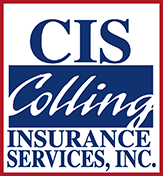Most states demand citizens to purchase auto insurance if they are going to legally drive. Regardless of the minimum requirement, it may not be enough to protect them. One of the mistakes people make is to not ask the question, "How much car insurance do I need?"
Raise your deductible to get a lower monthly payment instead of purchasing cheaper auto insurance. Auto insurance offers a variety of products that perform different purposes. The best rule of thumb is to be covered against liability for the full amount of your assets.
Liability covers the other vehicle. Your passengers are covered with a Bodily Injury policy. Personal Injury covers those who are riding in your vehicle. Property Damage Liability covers the other persons car. Answer the question, "How much car insurance do I need." . Policies like the ones mentioned do not cover your personal property. You need to determine how much you are willing to cover out of pocket and the amount of insurance you will need to replace your personal property that has been damaged. Keep in mind, your health insurance should be responsible to cover your medical expenses when you are at fault in the accident. For a complete analysis of your insurance, you will want more assistance to determine how much liability insurance you need, contact us for a free quote today.




 Email an Agent
Email an Agent


 Click to Call
Click to Call Get Directions
Get Directions